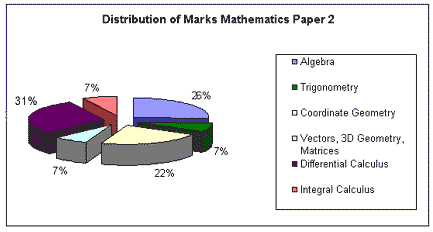With just two days to go for the exam, the best method of revision could be to strengthen the areas you are strong in and brush up the areas you are weak in. The pattern of scores in IIT-JEE show that every single mark lost by a student increases the student's all-India rank (AIR) drastically. So, every single question should be attempted carefully without acquiring negative marks. The IIT-JEE syllabus for mathematics can be broadly classified as algebra (includes probability theory), trigonometry, coordinate geometry (two dimensional) and vector algebra, three dimensional geometry and matrices and determinants, differential calculus and integral calculus (includes differential equations). Area-wise segregation of marks has been slightly different through the years. So we should say that all these areas are important. Now we will look at the manner in which the questions in these areas were distributed in the Paper 1 and Paper 2 of IIT-JEE 2007. From the break-up we see that algebra, coordinate geometry and differential calculus stand out as three big sectors in the mathematics part of the JEE 2007 paper. Consider algebra, this is a relatively easy area and with its great dominance in the question paper will help secure marks. Coordinate geometry includes straight lines and the second degree curves (circle, parabola, hyperbola and ellipse). Most of the problems from coordinate geometry involve concepts from differential calculus. Differential calculus includes everything starting from functions, limits and differentiation to application of derivatives. Direct questions from trigonometry are usually less in number, but the usage of trigonometric concepts in coordinate geometry or calculus is very high. A proper revision of all important formulae is necessary. Interpretation of system of equations as system of lines, planes or vectors is an important idea which is NOT focused in any other entrance examinations other than JEE. Properties of definite integrals that focus on the nature of the curve is almost a 'sure' question area as far as the JEE is concerned. IIT-JEE has become a more student-friendly examination with the descriptive part of the examination dropped. But the exam retains its challenge and charm as a tough examination due to the varied types of objective questions that come and due to the enormous number of students appearing for it. The exam also demands a student to think on his/ her own and have a visual interpretation of the concepts in the syllabus. Students also have a second chance to support their own performance since both papers have all the three subjects, ie if one has not done mathematics up to the mark in paper 1, he/ she can still improve on it in paper 2. So go ahead, revise well, put in your best effort and secure a good AIR in IIT-JEE 2008!

0 comments:
Post a Comment